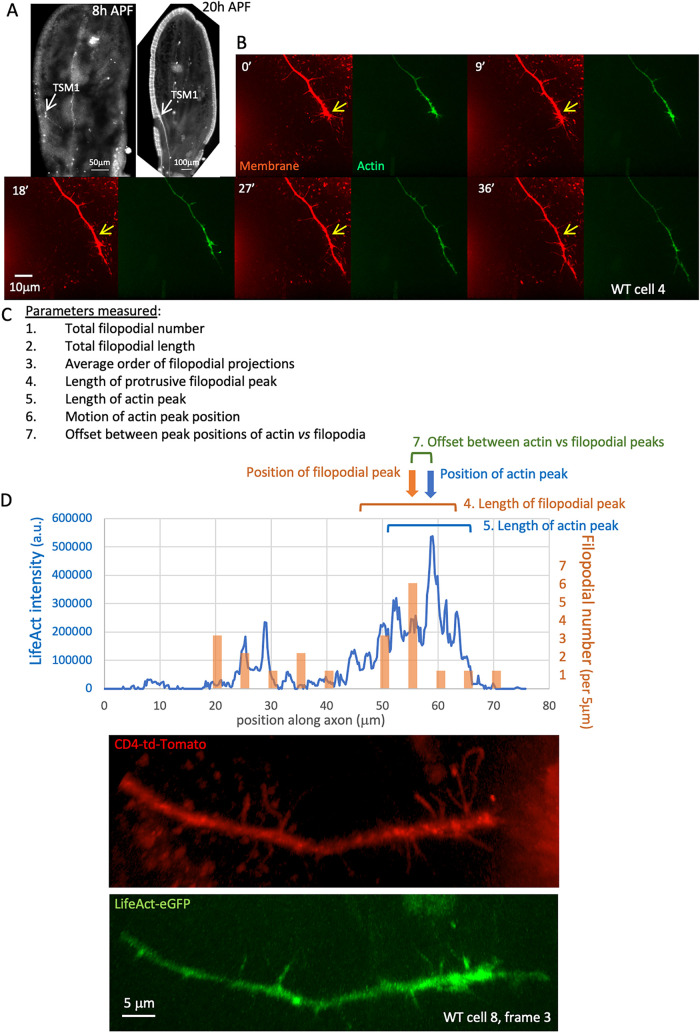FIGURE 1.
Anatomy and measured parameters of TSM1. (A) Anatomy of TSM1. z-projections of wing discs fixed and dissected at the indicated times. Neuronal membranes were labeled with anti-HRP (8 h APF image) or by expression of CD4-tdTomato (20hr APF image). Position of TSM1 cell body is indicated by white arrow; scale bar is at the bottom of each image. (B) Time course of development of a typical WT TSM1 axon, with membrane and actin, labeled, respectively, by expression of td-Tomato and LifeAct-eGFP. z-projections are shown of image stacks collected at the indicated times by spinning disk confocal microscopy. Yellow arrows in the membrane images indicate a fixed position in the disk for comparison of axon length. Scale bar is indicated in the 18′ image. (C) List of parameters measured at all time points of all trajectories imaged. See Materials and Methods for details. (D) For illustrative purposes, example of some of the quantified parameters from a single time point, taken from the axon whose membrane and LifeAct channels are shown beneath. Blue line shows the distribution of integrated LifeAct fluorescence intensity along the axon, expressed in arbitrary units (a.u.); orange bars show the number of filopodial branches arising from the axon shaft in 5-μm windows along the axon. Note that alignment with the image below is not exact, as length is measured in three-dimensional space, not in projection, and as some filopodia are not visible at this projection angle. Positions of the peaks of actin and of filopodial projections were identified using a 5-μm sliding window and are indicated with arrows. The “position” of the peak is defined as the midpoint of the window that has the highest integrated actin intensity or filopodial density, respectively. The “lengths” of the peak zones of actin and of filopodia were calculated as the square root of the second moment of each distribution about its peak position, a measure corresponding essentially to ±1 SD (brackets). See Materials and Methods and Clarke et al. (2020a) for detailed explanation of the utility of this definition.

